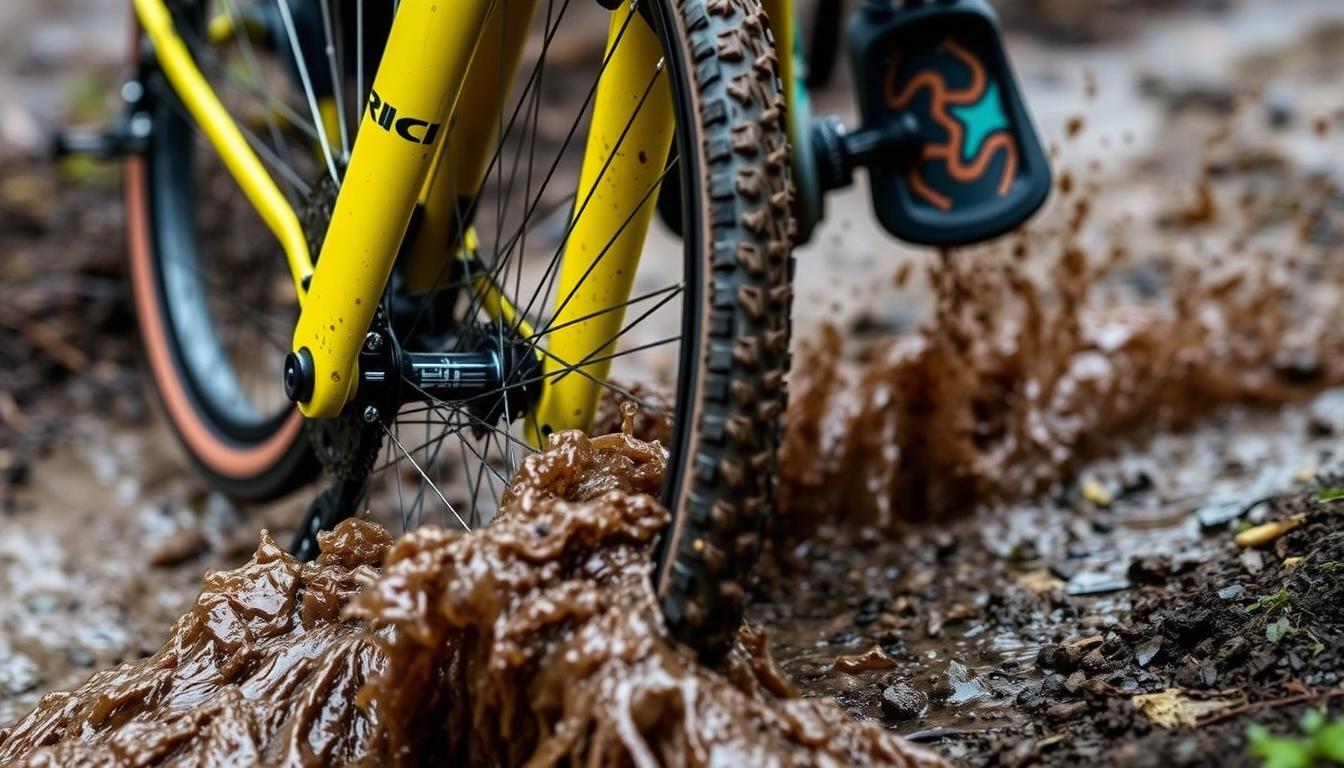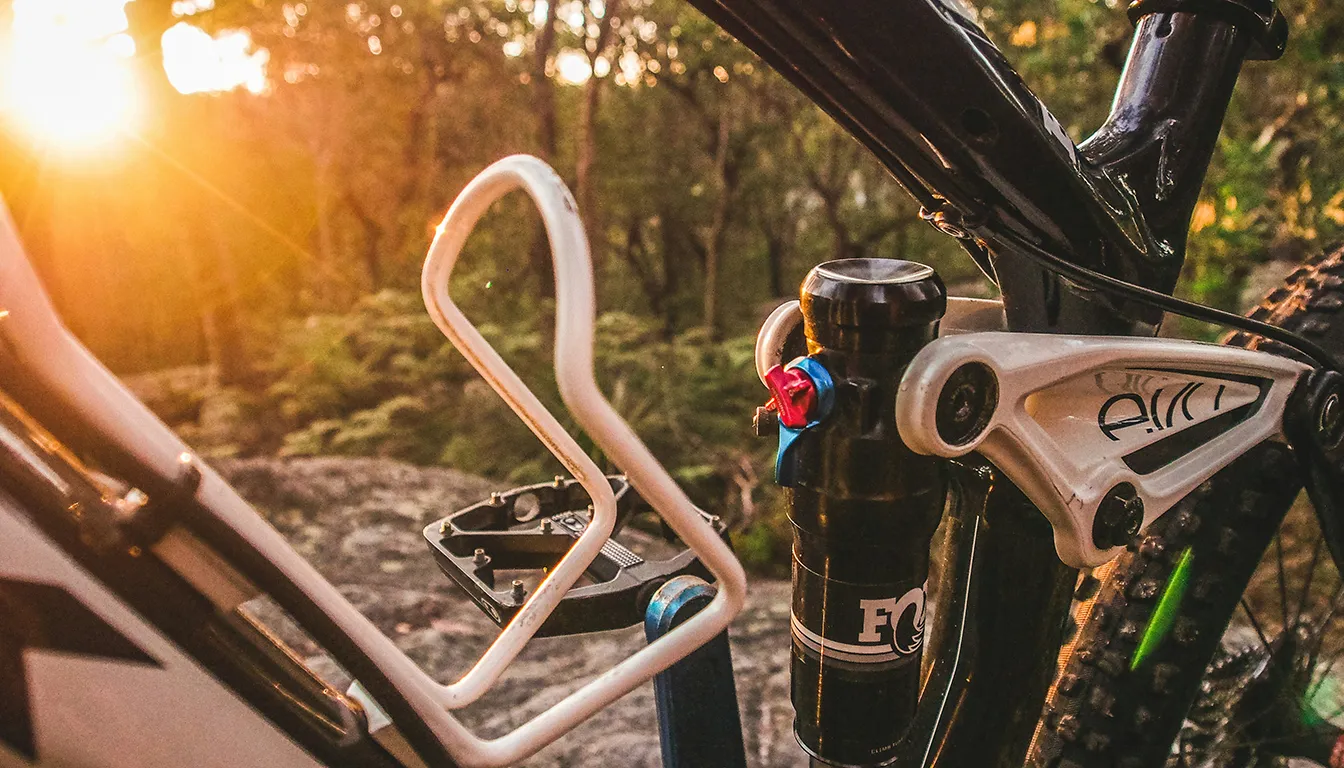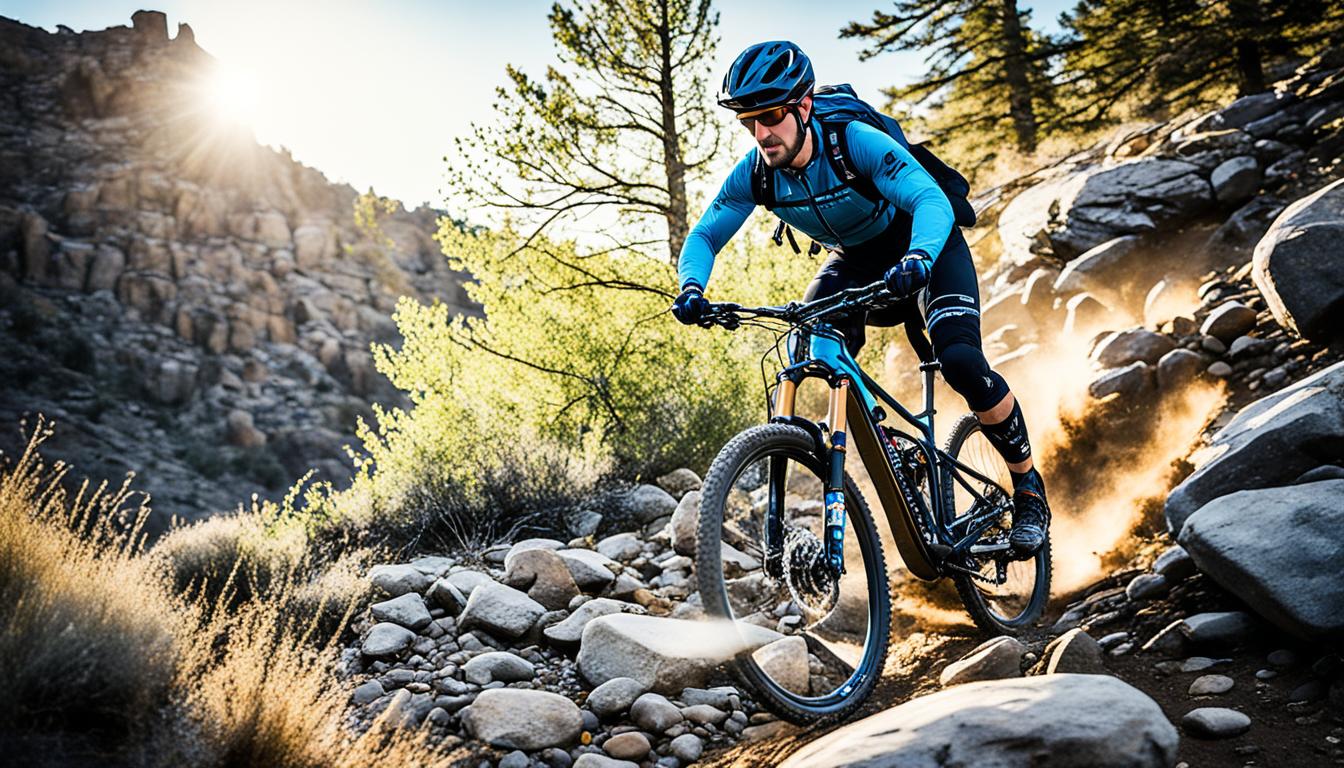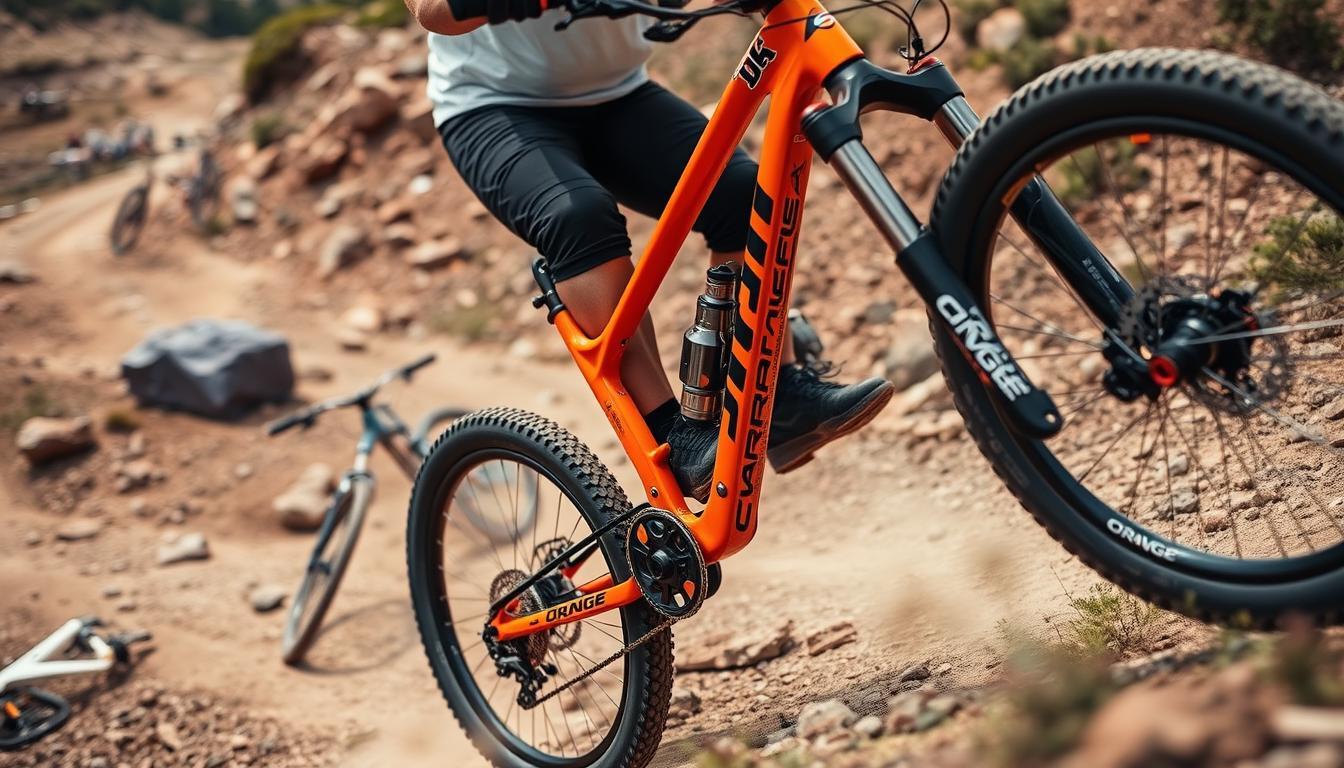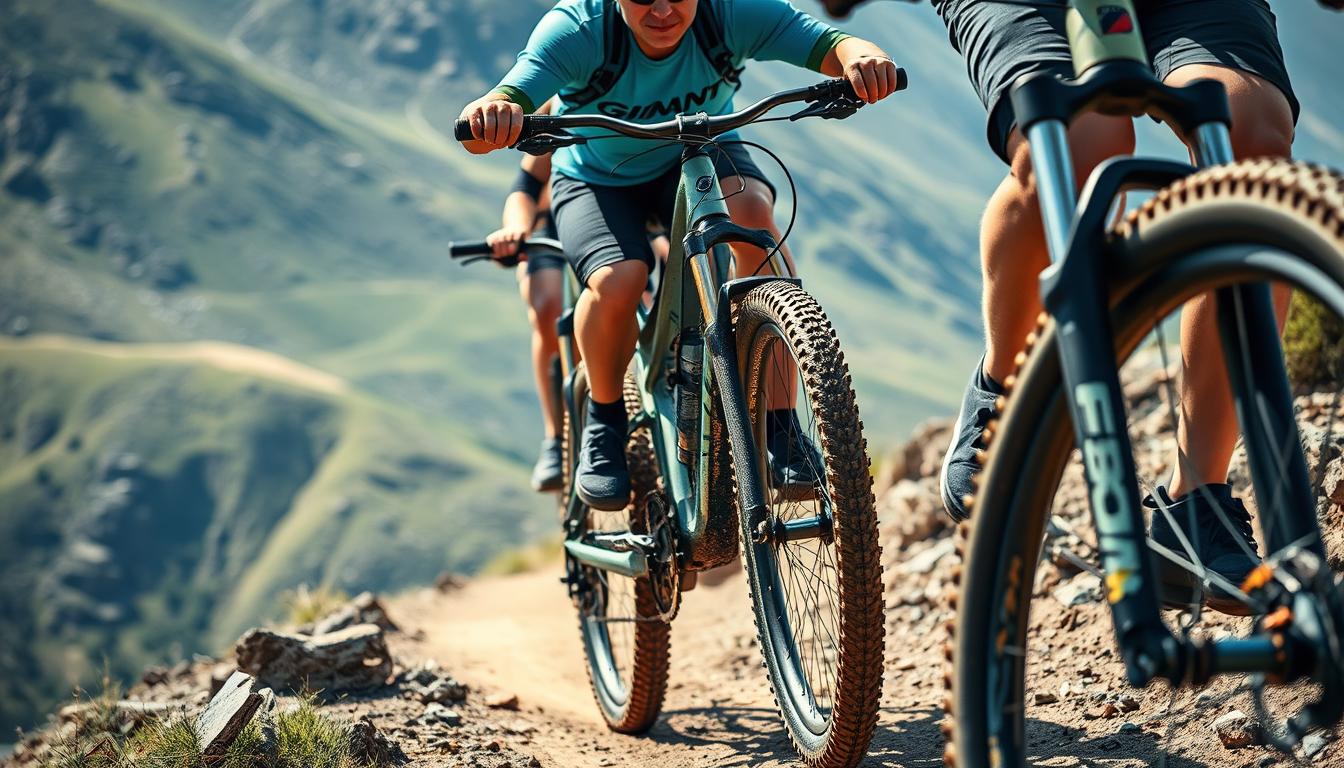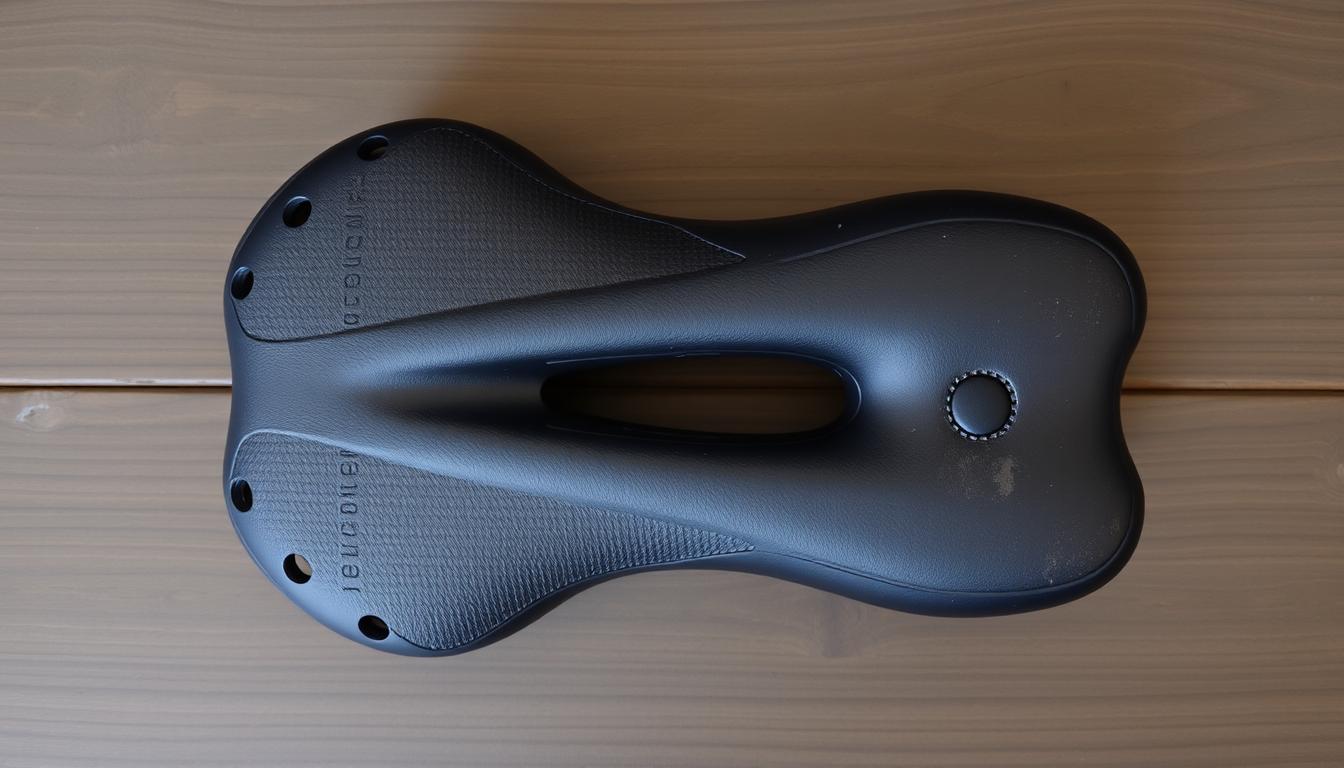When picking mountain bike mudguards, it pays to consider a few key factors. A good set keeps you dry and guards your bike against mud. They shield both you and your bike’s parts from bad weather conditions.
We’ll look at the different kinds, features, and how they fit. This will help you pick mudguards that match your riding style and weather. Whether it’s the Mudhugger EVO Bolt-on at £30 or the DeFender FX 279er for £19, we aim to guide you to the right choice. For more insights and reviews, check out this site.
Understanding the Importance of Mountain Bike Mudguards
Mountain bike mudguards are key for a comfy and safe ride. They protect against mud, boost visibility, and keep the bike in good shape.
Protection from Mud and Water
Mudguards block about 90% of splashes, helping riders to see clearly. This is especially useful in bad weather. They keep mud away from your face, letting you focus on the path. This means you can avoid obstacles better and ride well.
Enhancing Visibility for Safe Riding
Good visibility is vital, especially on tough tracks. Mudguards keep mud off the bike, which could block your view. They are crucial in rainy conditions to help you see changes on the path ahead.
Role in Maintaining Bike Components
Mudguards also help in keeping the bike’s parts clean. They prevent mud from covering important areas like fork seals. This can make your bike last longer and cut down on repairs. Keeping these parts clean means your bike will serve you well for many years.
For more insights on how to pick the best mountain bike trail, check out this complete guide at choosing the perfect mountain bike trail.
Different Types of Mountain Bike Mudguards
Choosing the right mudguard for mountain biking involves knowing the protection levels different types offer. Whether you’re a casual rider or a serious enthusiast, understanding what each mudguard family offers will make your rides better.
Minimal Protection Mudguards
Minimal protection mudguards are for those who like lightweight options. These models are smaller and focus on looks, mainly protecting against splashes in easy conditions. They’re ideal for dry weather or smooth trails, offering just enough coverage for your upper body and face. This makes them popular among cyclists who ride in cleaner environments.
High Protection Mudguards
For cyclists on rugged terrains, high protection mudguards are crucial. These larger, tougher units block mud spray from wheel movement, especially in softer trails. They’re for enthusiasts who take on challenging rides, providing a more comfortable, cleaner experience.
Maximum Protection Mudguards
Maximum protection mudguards cater to serious riders facing very wet and muddy conditions. They fit closely around the wheels, stopping mud splashes from hitting both the rider and the bike. Their design focuses on coverage, offering the highest protection across different terrains.
Knowing the importance of different mudguard types can really enhance your mountain biking. For more tips on handling and safety in downhill rides, check out this essential guide.
Determining the Right Fit for Your Bike
Choosing the correct mudguards for your mountain bike is crucial. It depends on the wheel sizes and tire widths. Getting these right makes riding more enjoyable, keeping you clean and comfy.
Compatibility with Wheel Sizes
Most mudguards work with different wheel sizes like 26”, 27.5”, and 29”. Some brands, like SKS, also fit 700c and 650b wheels, good for hybrid and road bikes. It’s vital to ensure the mudguard fits your wheel size well for best performance. For bikes with suspension forks, the SKS Veloflexx 65 is a top choice.
Understanding Tire Widths
The tire width is key for choosing mudguards. They should allow for tires up to 2.4” to 3.0” wide. This space is needed for knobbly tires to fit without trouble. To prevent issues with such tires, using home-made extensions can help. Brands like FIFTY-FIFTY Fender make mudguards for wider tires, ensuring smooth bike performance.
Testing mudguards in different conditions helps find the perfect fit for your bike. For bikes without eyelets, consider using zip ties or P Clips. This gives you many ways to attach them, fitting your bike’s design.
Mounting Methods for Mountain Bike Mudguards
Finding the best way to attach mudguards to your mountain bike can change how you ride. Each method has its own benefits. So, it’s key to think about what you need. Do you want something quick like strap-on or stable like bolt-on? And what about using Velcro or zip ties?
Strap-on Models vs. Bolt-on Designs
Strap-on mudguards are easy to put on and take off. They’re great if you switch your mudguards often or use different bikes. On the other side, bolt-on mudguards stay put, even on tough trails. They look neat and won’t shake loose. But, they might not fit every bike. Knowing these points helps pick the right mudguards.
Using Velcro Straps vs. Zip Ties
Choosing between Velcro straps and zip ties affects how you mount your mudguards. Velcro is simple to use. You can take off and reattach mudguards in no time. It suits those who try out different riding styles. Zip ties, though, are sturdy and good for a set-and-forget setup. The downside is they’re wasteful if you remove them often. Balancing ease of use with lastingness will help in picking between them.
Key Features to Look for in a Mudguard
When picking the best mudguard, there are key features to think about. You should look at how strong the material is, how easy it is to install, and how quiet it is when you ride. Each point is crucial for a mudguard that fits your biking needs well.
Durability and Material Quality
The strength of a mudguard is super important. Choose ones made from tough materials, like recycled polypropylene. These types last long, survive hits, and stay whole. A strong mudguard keeps you protected on rides, even when the weather is bad.
Installation Ease and Adjustability
How easy a mudguard is to fit matters a lot. Go for ones you can quickly put on without any tools. Brands like SKS X-BLADE offer mudguards that are easy to adjust for a snug fit. This means you can easily change them to suit different situations, making them very handy.
Noise Levels During Riding
Noisy mudguards can spoil your ride. Those that fit tight against the frame don’t move much. This cuts down on rattling noises. A well-fitted mudguard makes for a quieter, nicer ride.
Performance Testing of Popular Mountain Bike Mudguards
Testing mudguards is key to finding out how well they work in different conditions. It helps us see if they keep riders dry and if they last long. By looking at how well they cover, riders learn which ones work best.
Evaluating Coverage and Protection
It’s very important to check how much protection mudguards offer. The Mudhugger is known for providing great coverage. It stops mud and keeps bikes clean on long rides. The SKS Fatboard is more expensive but performs well in tough conditions.
Rider Feedback from Trail Tests
Riders share their thoughts on mudguards after using them on trails. Many like the Mucky Nutz for being easy to fix and reliable. However, some find SKS rear fenders can move out of place. The Rapid Racer Products ProGuard Mini Bolt-On is also liked for looking neat and being steady.
Conclusion
Choosing the right mountain bike mudguards is vital. It improves your comfort, helps you see better, and protects you in various weather conditions. This article has explored why mudguards matter. It looked at their types, how to fit them, and what features are important. As you get ready for your next outing, look back at these tips to find the best mudguards for your needs.
Installing mudguards is fairly simple. But, it’s important to pick ones that fit your bike right and offer the protection you want. This can be just a little or a lot. The right mudguard keeps you clean and dry. It also protects your bike parts from dirt that can affect how your bike works.
In conclusion, riding on muddy paths or in wet weather, quality mountain bike mudguards are a wise choice. They protect you and your bike. Make sure you make a well-informed decision on these essential accessories.
FAQ
What are mountain bike mudguards and why are they important?
Mountain bike mudguards block mud, water, and debris from hitting the rider. They boost comfort and safety in wet conditions.
How do I know which type of mudguard is right for my riding style?
Think about where you usually ride. Minimal protection mudguards work for easy rides. For tough, muddy paths, choose high protection types.
Are all mountain bike mudguards compatible with different wheel sizes?
Most mudguards fit various wheel sizes like 26”, 27.5”, and 29”. Check compatibility for your bike model.
What materials should I look for in a durable mudguard?
Look for mudguards made of recycled polypropylene. They’re tough and last a long time.
What are the benefits of strap-on models compared to bolt-on designs?
Strap-on mudguards are versatile and easy to fit. Bolt-on types have a neater look but may not fit all bikes.
Can mounting mudguards affect the noise level during my ride?
Yes, mudguards that don’t fit well can make noise. Choose secure-fitting models for a quieter ride.
How do I properly install a mudguard on my mountain bike?
Modern mudguards are easy to install without tools. Look for adjustable models for a perfect fit.
What should I consider when evaluating coverage and protection of mudguards?
Check how much mud they block, how simple they are to clean, and if they’re durable in rough conditions.
